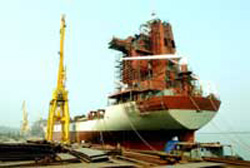
| PM okays marine transportation plan | |
Prime Minister Nguyen Tan Dung has ratified the Marine Transport Development Master Plan to 2020, which aims to increase the competitiveness of the national economy for stronger expansion and integration into the regional and world markets. The plan, with an orientation to 2030 and approved in Prime Ministerial Decision 1601/QD-TTg, also aims to further modernise marine transport by increasing its quality, ensuring security, minimising environment pollution and saving energy. The plan, along with the Viet Nam Marine Strategy to 2020, aims to develop the domestic maritime economy into a regional leader while contributing to strengthening national security and defence. The marine sector has targeted raising the volume of goods transported by domestic ships to 215-260 million tonnes by 2020 and further raise this volume by at least 1.5 times by 2030. Volume of passengers is expected to reach 9-10 million people in 2020 and 14-15 million by 2030. In addition, Viet Nam’s marine transport has been directed to focus on developing large-tonnage ships, of which dead weight tonnage (DWT) is expected to total between 8.5-9.5 million DWT and 11.5-13.5 million DWT by 2015 and 2020, respectively. The plan also aims for the domestic shipbuilding industry to be able to build 300,000-DWT ships and access regional standards. Regarding seaport development, in addition to improving existing ports, authorities aim to build new deep-water ports, including international trans-shipment ports and international gateway ports in key economic areas. The Ministry of Transport was asked to oversee the plan’s implementation and propose necessary measures to ensure its efficiency and its contribution to the country’s socio-economic development. | |
| VietNamNet + Viet Nam News |
